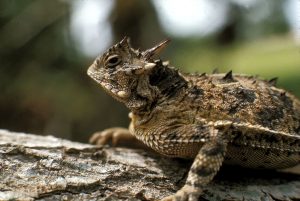Horned Lizard Decline
This is Passport to Texas
Once a common sight in Texas, horned lizards are in decline. The past three decades of urban development coincide with their disappearance.
Not a coincidence at all. And although there’s no single smoking gun in the decline of horned lizards, generally urbanization is a common factor.
Andy Gluesenkamp is Director of Conservation at San Antonio Zoo, where he developed and oversees a horned lizard breeding program. Urbanization is just one impact.
There have been other, less obvious impacts. Like the introduction of non-native invasive grasses. [It] fundamentally changes the landscape from a lizard’s perspective. A lot of the grasses that we would look at and think that’s perfectly normal Texas grassland habitat, is kind of like an impenetrable bamboo thicket for these guys.
Such habitat changes mean lower diversity and density of arthropods, the lizard’s prey base. And then, there’s the red imported fire ant.
Although they’re not a deal-breaker for horned lizards, they’re not good for horned lizards. And a lot of places where horned lizards used to occur, there are now too many red imported fire ants for them even to get stablished in those places anymore. The red imported fire ants tend to eat the young as soon as they hatch out of the eggs.
Horned lizards from the San Antonio Zoo breeding program will be released back into the wild. But that takes planning. Details next time.
For Texas Parks and Wildlife…I’m Cecilia Nasti.



 Passport to Texas is a
Passport to Texas is a  Passport to Texas is made available by:
Passport to Texas is made available by: